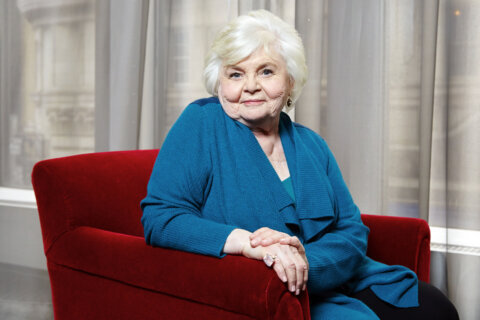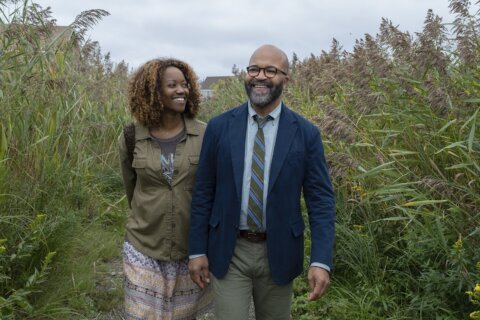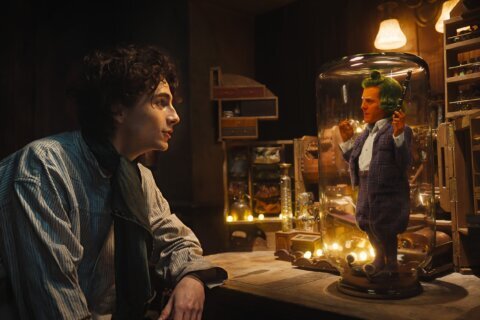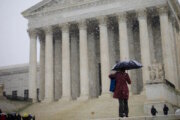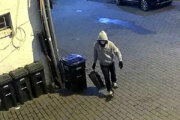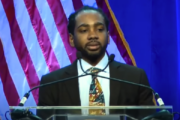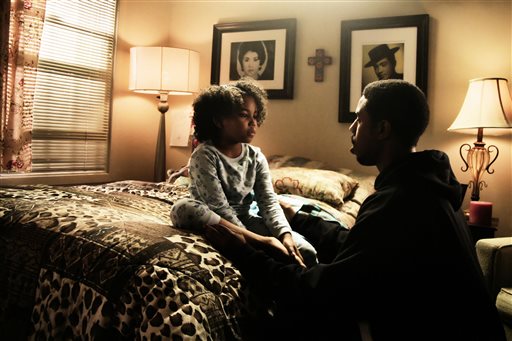
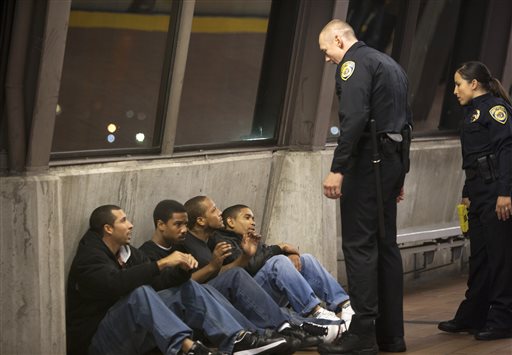
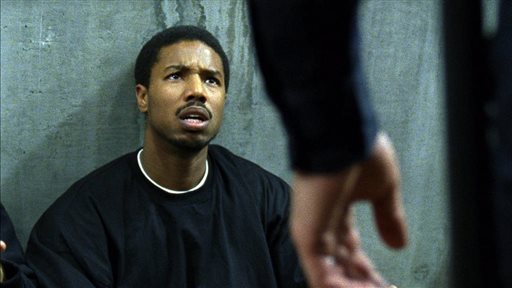
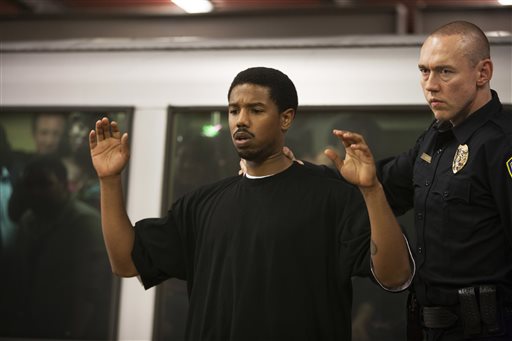
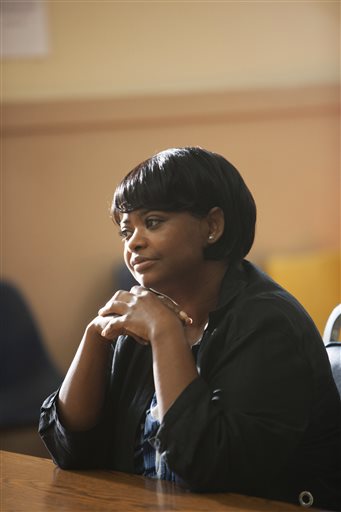
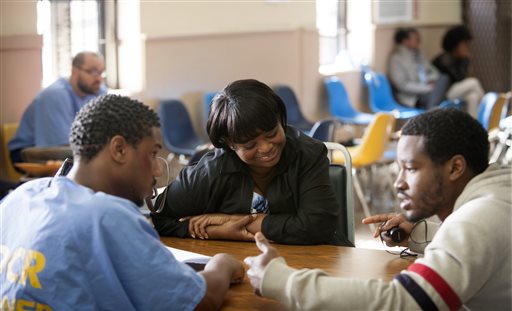
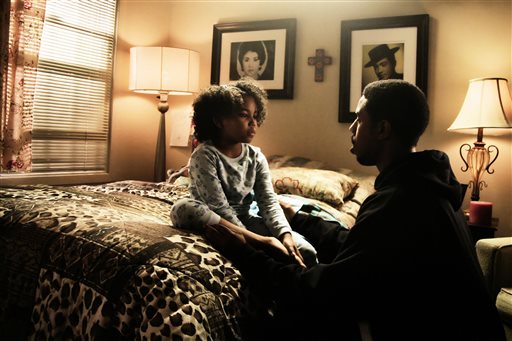
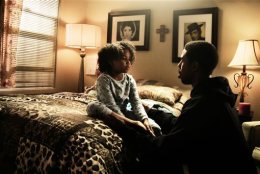
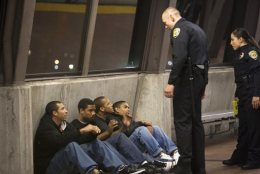
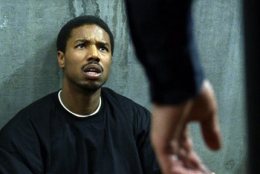
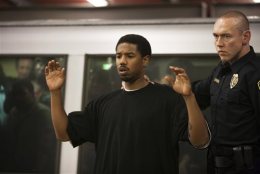


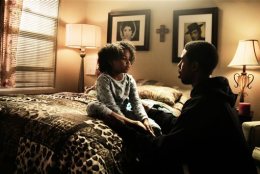
WASHINGTON – Regardless of your take on the George Zimmerman-Trayvon Martin verdict, the most troubling thing, aside from the loss of life, was the predictably divisive reaction. Surely it would break along racial lines, O.J.-style, with an array of verbal Molotov cocktails.
Many in black America saw a wave of horrific memories rush to the surface — Emmett Till, Malice Green, Rodney King — while many in white America resented another black vs. white media storyline despite a Hispanic defendant. Most of us just lowered our heads at yet another tragic chapter in America’s long, complex history of race.
We write new pages of that history with each passing day, too often living on different colored Metro lines, zipping in opposite directions and hesitant to single-track. Occasionally, we need a moment where the trains stop, the doors open and we’re forced to look out at the world around us. This requires a cultural touchstone that’s honest yet fair; one that punches us in the gut, then asks us to reflect; that invites us, through laughs and tears, to think, grow and transcend our “failure to communicate.”
“Fruitvale Station” is that movie.
Winner of both the Grand Jury Prize and Audience Award at the 2013 Sundance Film Festival, “Fruitvale” is this year’s “Beasts of the Southern Wild” (2013), two gritty films by debut directors, only this time without the fantasy. The fact that “Fruitvale” is based on a true story provides a unique work beyond the fictional realms of Radio Raheem choked out in “Do the Right Thing” (1989) or Ricky Baker caught in the crossfire in “Boyz n the Hood” (1991).
This time, it’s real.
“Fruitvale Station” tells the real-life tale of Oscar Grant, a 22-year-old black San Francisco Bay Area resident who was shot by a white transit officer on New Year’s Eve 2008. Grant’s mother and girlfriend cooperated with the production, which details a “day in the life” on that fateful day, from the grocery store aisle to the day care center with occasional prison flashbacks.
The film’s success hinges on the strong central performance by Michael B. Jordan, whose breakthrough stardom has been brewing for a decade, from his drug-dealer Wallace in HBO’s “The Wire” (2002) to his quarterback Vince in NBC’s “Friday Night Lights” (2006). “Fruitvale” announces his arrival with a thunderclap. He projects a heart of gold in organic interactions with his mother, Wanda (Octavia Spencer), girlfriend, Sophina (Melonie Diaz) and daughter, Tatiana (Ariana Neal), then lashes out with an immaturity unbecoming of Fishburne’s Furious. The fact that he’s playing a character named Oscar could bolster his chances for a deserved Oscar nomination.
Diaz is charming in the lighter scenes, recalling her role in Michel Gondry’s comedy “Be Kind Rewind” (2008). But she looks small during the emotional climax compared to the powerhouse of Octavia Spencer, who bagged an Oscar in “The Help” (2011). Ariana Neal deserves special praise for her childhood performance, which while not a revelation like Quvenzhane Wallis in “Beasts,” still earns the film’s powerful final line. It’s also hard to shake Officer Caruso, proving Kevin Durand is a rising Hollywood player, plucked by J.J. Abrams for ABC’s “Lost” (2008), Ridley Scott for the role of Little John in “Robin Hood” (2010) and Darren Aronofsky for his upcoming film “Noah” (2014).
Every character feels like someone writer/director Ryan Coogler once knew personally. The 27-year-old filmmaker grew up in the same East Bay area, north of Oakland, where he earned a football scholarship to Saint Mary’s College, then transferred to Sacramento State College. He got his master’s at the University of Southern California School of Cinematic Arts and caught the attention of Sundance’s Feature Film Program (FFP), which chose him for the 2012 January Screenwriters Lab.
“I met Ryan Coogler in the fall of 2011 when he came in to have a conversation about his script, ‘Fruitvale Station,'” said Sundance FFP Founding Director Michelle Satter.
“As I listened to Ryan speak about why he needed to tell this story, his deep, personal commitment to the project became evident. Between his script, a great short film (‘Fig’) and this meeting, our interest in supporting Ryan was immediate and unflagging.”
Soon after, Oscar-winning actor Forest Whitaker (“The Last King of Scotland”) agreed to produce the film, which later brought the distribution of The Weinstein Company and earned Coogler the prize for Best First Film at the 2013 Cannes Film Festival.
It’s important to stress “first film,” as the production value remains a bit raw with Rachel Morrison’s cinematography occasionally falling out of focus. Thankfully, Coogler mitigates these flaws with a “cinema verite” approach that embraces a gritty, handheld style. The film even opens with a real-life cellphone video of the incident, a tool Errol Morris didn’t have in “The Thin Blue Line” (1988), which brilliantly blurred the line between fiction and documentary.
The cellphone is just one of Coogler’s many familiar images, creating a motif of superimposed text messages like Netflix’s “House of Cards” (2012) — a technique I prefer over simply cutting to a close-up of a digital screen. The choice not only embraces our 21st-century technology, it also echoes a familiar Tupac suspicion: “They get jealous when they see you with your mobile phone.”
In a way, Oscar embodies Shakur’s dual existence, at times a peacemaker poet in “Changes” (“Can’t a brother get a little peace? There’s war on the streets and the war in the Middle East”), other times a paranoid hothead in “Hit ‘Em Up” (“My .44 make sure all your kids don’t grow”) — a fatal flaw that cost him his life and robbed us of more beautiful music like “Keep Ya Head Up” and “Dear Mama.”
Coogler’s cellphone motif plays into another symbol in a scene where Oscar’s mom disciplines him for distracted driving. He simply wedges the phone under his skull cap, turning it into a “hands-free” device. From this point on, the cap becomes a symbol of danger, with Oscar taking it off as he intermittently sees the light, like dumping marijuana in the ocean in an attempt to leave the drug trade.
The skull cap isn’t the only piece of symbolic clothing, as Oscar’s hoodie offers an obvious connection to the Trayvon Martin case. Here it’s used in a moment of chivalrous compassion, in the director’s attempt to rebrand the attire as a symbol of non-violence. Even when the characters are naked, the familiar image of a shower head casts a foreboding eye like Hitchcock’s “Psycho” (1960), even as the water washes away the heated political climate like Spike Lee’s “Do the Right Thing” (1989).
Of course, the most important familiar image is that of a moving train. Not only do the trains serve as transitions between time and place, they foreshadow the train station climax. This includes a mesmerizing long-take from a BART station platform as passing train windows resemble a film strip moving through the gate, the speed rapidly increasing to become a blur, until the camera pans left to see the tail lights disappear into the distance like Tim McGraw’s “red ants marching into the night.”
As the camera lingers on the empty platform, Coogler suggests the world exists independently of the characters. Above the black-and-white human squabble, there’s a higher, omniscient presence presiding over this visual world, whether you call it God, fate, karma, or in this case, the film’s director. This cinematic “eye in the sky” knows the tragic fate that awaits the characters down the tracks. As Edward G. Robinson said in “Double Indemnity” (1944): “They’ve got to ride all the way to the end of the line and it’s a one-way trip and the last stop is the cemetery.”
Coogler brilliantly builds this dread with tragic foreshadowing. Note the close-up of Oscar’s face mashed against the carpet while roughhousing with a group of kids. It’s an identical setup to a climatic close-up of his face mashed against the concrete by police. Even the kid’s pajamas sport a spiderweb pattern, suggesting Oscar is caught in a web that will inevitably come to Fruitvale fruition.
When that tragic climax arrives, it unfolds with remarkable realism. It’s no surprise Coogler once worked as a security guard and youth counselor at San Francisco’s juvenile hall. His experience informs his understanding of the law, those who break it and those who abuse its enforcement. His cops aren’t beacons of justice, but they also aren’t inherently evil. His victims aren’t saints, but rather real people with real flaws and the occasional chip on the shoulder. Together, these forces clash in a domino effect of mistrusts, misunderstandings and victims of circumstance.
The message may be subversive, but its presentation isn’t heavy-handed. It’s not good guys vs. bad guys, oppressive whites vs. pious blacks. In fact, the film’s ultimate act of interracial violence is inadvertently sparked by a random act of interracial kindness. And therein lies the tragedy.
Thus, the film’s most poignant moment is a supermarket shopper’s question at a seafood counter: “Can I see your sole?” She’s referring to a type of fish, but Coogler clearly invites the double meaning of “soul,” asking us to examine our own conscience. How can we widen our circles of compassion? Who in our own lives can we seek out to understand a different racial view? And how can we follow Atticus’ advice to “climb inside someone else’s skin and walk around in it?”
That mission, should you choose to accept it, is the veiled fruit of “Fruitvale.”
★ ★ ★ ★
The above rating is based on a 4-star scale. Follow WTOP Film Critic Jason Fraley on Twitter @AboveTheJFray, read his blog The Film Spectrum or listen Friday mornings on 103.5 FM.
“Fruitvale Station” opens in the Washington D.C. area Friday. Maryland residents can check it out at Bethesda Row in Bethesda; D.C. residents can check it out at the Landmark E-Street Cinema near Metro Center; and Virginia residents can head to either the AMC Hoffman Center 22 in Alexandria or the Angelika Film Center & café at Mosaic in Fairfax. Click here for showtimes and ticket prices.


